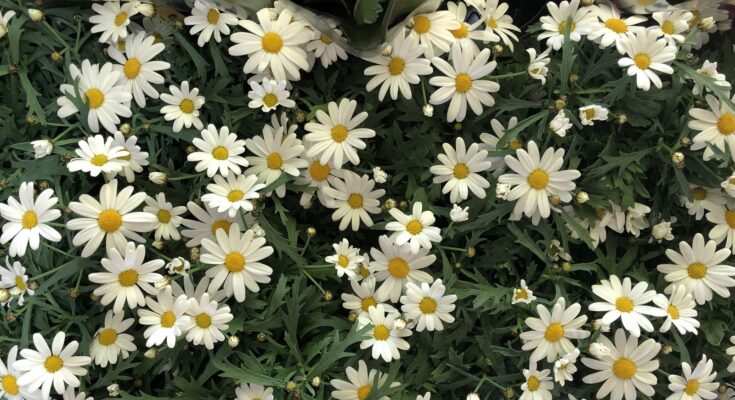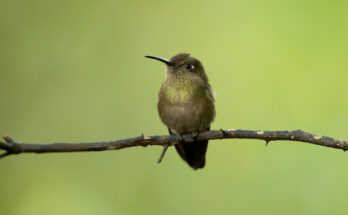Why Chamomile Lawns Are Trending Over Grass And Clover
Homeowners looking for a less fussy, more sustainable alternative to grass lawns have tried using clover (Trifolium repens), but more are looking to their tea shelves to inspire another option. Roman chamomile (Chamaemelum nobile) is trending over traditional grass and clover because it’s a beautiful, fragrant, and drought-tolerant native plant that also attracts pollinators.
Traditional turf grass lawns take a lot of work to maintain. They need regular watering to stay healthy, and depending on where you live, watering a lawn too often may be restricted during a drought. Add in the need to regularly mow a grass lawn and fertilize it, and you have the makings of a costly, time-consuming project. Turf grass isn’t a good source of food for most insects in North America, so it’s not the best choice for those who are interested in attracting pollinators like bees and butterflies. It’s clear to see why grass lawn alternatives like clover or chamomile are tempting, and even more reasons that have people choosing chamomile over clover.
Benefits of growing chamomile instead of clover
The type of clover typically used in lawns is invasive to the United States, so it can grow quickly past its borders and crowd out native species. This is just one reason why you might want to think twice before planting a clover lawn and try chamomile, an herb that produces small white-petaled flowers with a yellow center that looks like a miniature daisy. The low-growing Roman chamomile has some benefits in common with clover, but it is not an invasive species.
Just like a clover lawn, a chamomile lawn needs less water than turf grass once it’s past the initial growing stage, making chamomile a low-maintenance alternative you may want to consider. As a perennial, it stays around, either in leafy or flowery form, all year, while clover can die back in summer or winter. If you’re in a climate that experiences cold winters, white clover may not be hardy enough to withstand the conditions.
Chamomile attracts pollinating bees and insects that fight off garden pests. Bees also love to feed on clover, but due to the structure of its flowers, chamomile attracts other bugs such as lady beetles that eat aphids and other harmful insects. While neither chamomile or clover are as robust as grass in standing up to foot traffic, chamomile releases a sweet aroma reminiscent of apples when it’s crushed or stepped on, and treading on it will not inhibit its growth. The strong scent the herb gives off may even help keep pests away.
What to consider when growing a chamomile lawn
There are some things to keep in mind if you consider using this aromatic ground cover. Chamomile needs soil that drains well. It also grows best in full sun or partial shade, so a very shady lawn would not be its best habitat. It thrives in USDA plant hardiness zones 4 to 9. Even though the plant is not considered invasive, it’s not entirely maintenance-free since it can grow aggressively in the right conditions – when it’s getting plenty of sun in a cool summer climate. Make sure your soil isn’t taking in too much water for the best growing results, and avoid watering the plant’s leaves directly to prevent powdery mildew from spreading.
It’s also important to verify that you’re using the type of chamomile that grows low to the ground and not German chamomile (Matricaria chamomilla), a taller, annual plant that produces similar flowers. One of the differences between Roman and German chamomile is that Roman chamomile is a better ground cover than German chamomile. There are more choices to make as you consider whether you want a variety of Roman chamomile with flowers like ‘Flore Pleno’ or a flowerless kind like ‘Treneague,’ which can save you time on mowing. It’s best to clip the flowers from the ‘Flore Pleno’ variety when they die, but the flowers can be dried and put in tea or a relaxing bath. Finally, pet owners should keep a careful eye on their dogs and cats when growing a chamomile lawn, as the herb can be toxic to them if consumed in large quantities.



